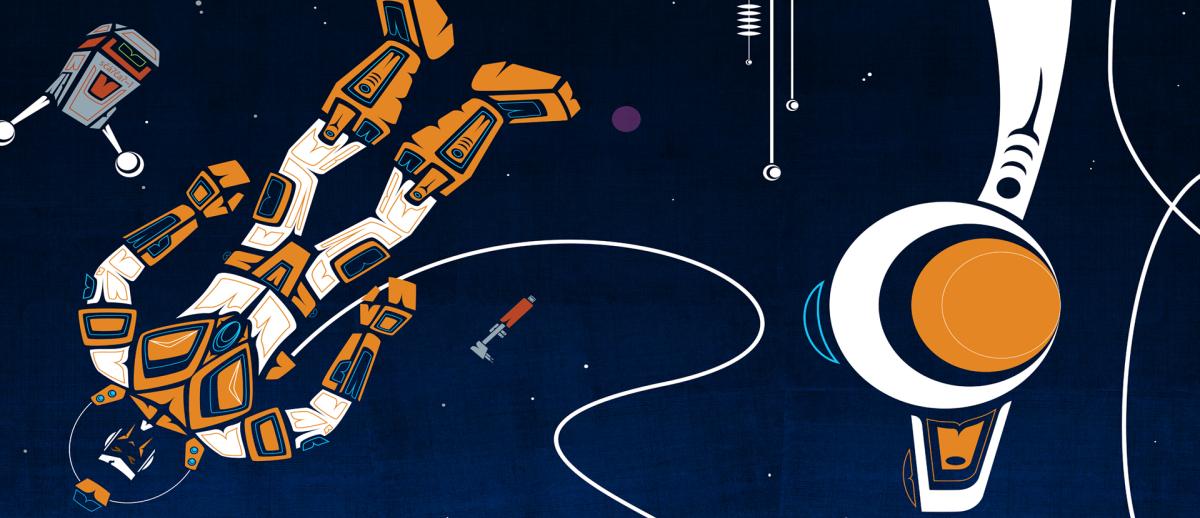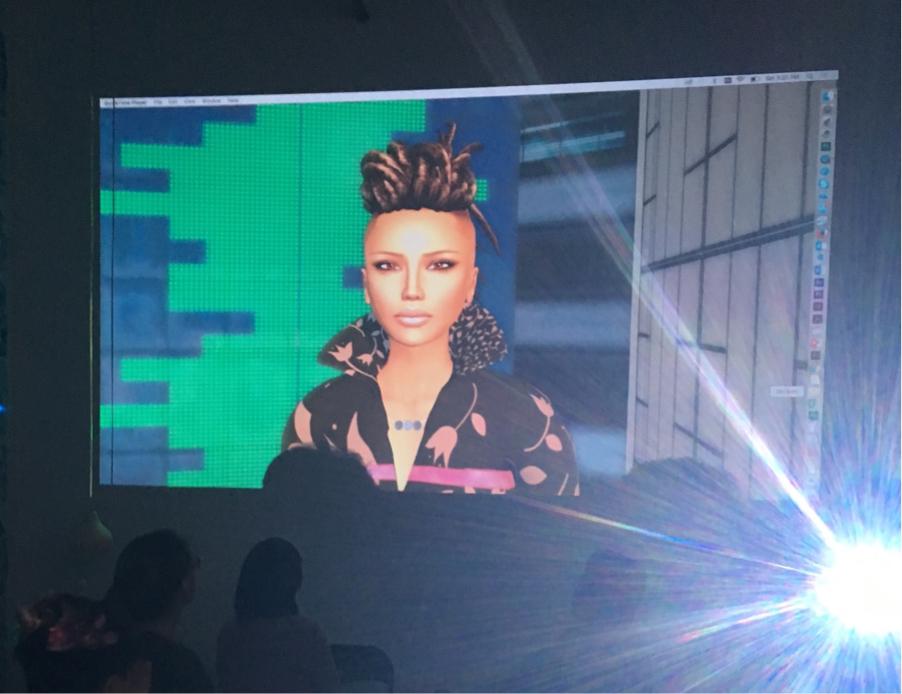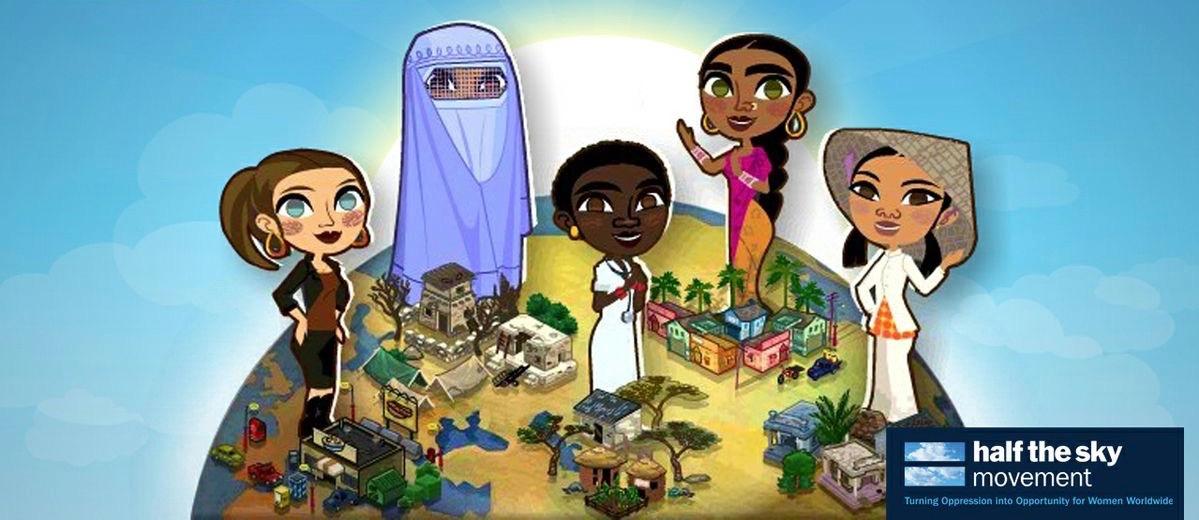A New Operating System For Humanity: The Power of Narrative
archive


'(S’Klallam) Bold Steps'. © artist Jeffrey Veregge. Source: Initiative for Indigenous Futures
A New Operating System For Humanity: The Power of Narrative
Since humankind’s earliest days, we have used stories to communicate knowledge, to form our understanding of the world, prescribe behavior, and imagine our futures. Therefore, the stories we tell and the identities we construct about our future are literally writing the next operating system for humanity.
Over the last few decades we’ve experienced a rapid expansion of our communication architecture that mediamakers have leveraged to give audiences new experiences of story. They are now able to transport audiences into parallel human-scale environments, where they can traverse space and “be” in another part of the world instantly and break them out of a pedestrian reality to have non-human-scale experiences. These new technologies allow audiences to embody another person’s perspective; to connect story to place and have live interactions through their devices; to perceive humanity from a macro scale through smart algorithms sculpting beauty from our data. They can even preserve a persona for future generations through AI enabled holograms and use audience members’ own biometrics as input for interactive experiences.
These emerging media are projected to be worth trillions of dollars in the coming decade. They form part the Fourth Industrial Revolution, which is ushering in sweeping changes with enormous promise for advancing civilization. However, we know from history that industrial revolutions can bring great injustice as well as great value.
Why should economists and business leaders care? Because repeating patterns of exclusion and injustice in this industrial revolution will worsen the climate change bill we are already struggling to pay from past innovation cycles, and will fail to fully optimize our new capabilities for global prosperity.
The technologies coming with the current paradigm shift are arguably more powerful than those developed in past industrial revolutions, yet are we repeating the same mistakes of having a narrow group of people decide their value for humanity, as well as lining up only a small number of people to benefit economically from their implementation? What viruses will emerge as a result? What are the consequences of repeating this pattern of exclusion?
It is imperative that we include people in this emerging media landscape from a broad set of communities, identity groups, value systems, and fields of knowledge, in all roles and levels of power. This will mitigate the pitfalls of disruption. Right now, we could have a window of opportunity that allows us to create an inclusive process for designing our future. Frankly, this time the stakes are too high to have a small fraction of our global community define the values and features of our next operating system.

Machinima “Words Before All Else Part 1" by artist Skawennati. source: Initiative for Indigenous Futures
Late last year, I interviewed Skawennati, a Mohawk woman from Canada who is also a machinima artist, who facilitates game design workshops with indigenous youth. She shared her experience of a long-standing struggle to reconcile the values of her indigenous and technologist cultures. The former centers on family time, community, nature, and a sometimes non-analytical process to generate inspiration and creativity. The latter centers on fast-fail, rapid iteration, bottom-line ROI, and a often highly analytical process for sparking new ideas.
During the course of our conversation about new gains in artificial intelligence, we imagined the possibility of a future that achieved a true integration of these value systems. What if, instead of just replacing jobs and leaving many people in an outmoded class, AI allowed us time to focus more on our families, on our communities, on philosophy and creativity? Diverse story coders might generate shared imaginations of our future, where AI is used for inclusion, rather than exclusion.
The technologies coming with the current paradigm shift are arguably more powerful than those developed in past industrial revolutions, yet are we repeating the same mistakes of having a narrow group of people decide their value for humanity...
Let’s assess this democratized imagination framework with the hindsight of past industrial revolutions. What if this process had been in place when manufacturing jobs went overseas, or became automated, during the 20th Century in the United States? What if those people “left behind” were prompted to imagine a future they wanted to live in and to imagine their role in it? Could such an imaginative process have mitigated 50 years of economic downturn? Could it have helped us better mitigate the unethical disruptions we experienced? Perhaps this transition approach might have allowed a greater diversity of ideas to bubble up and uncover the full potential of new human capabilities in the computer age. At the same time, it might have mitigated the deep resentments created by the top-down or prescriptive-transition approaches of the time.
Alas, we may not have been able to achieve this in the past, not only because of the ideological challenges, but also the limited technologies. Now, however, for the first time in history, humanity is equipped with the tools and social-media culture to collectively imagine our future on a global scale.
What if, instead of the majority of the world being marginalized from the process that is defining our future, we used the new interactive tools, data science, smart algorithms and immersive platforms to include a broad scope of people? What if this fuller representation of humanity collaborated on defining the value and purpose of our new and extraordinary technological capabilities through the stories they make about the world we will be living in? What kind of human-centered uses would we imagine for artificial intelligence, synthetic biology, supercomputing, and immersive media? What bugs in our operating system might be circumvented? This is the opportunity offered to us by emerging media.

Screenshot, Neurospeculative Afrofeminism Salon. source: Design Indaba
For example, new capabilities in machine learning can exacerbate inequality; or, depending on the value systems we create in the AI infrastructure, they can end inequalities, such as hunger and homelessness. We also know that a robust machine-learning infrastructure will require a greater interdependence between companies, institutions and governments than previous technologies, as indicated by DeepMind’s experiment with competing AIs.
How would a truly diverse set of storytellers imagine this interdependence working? What aspects of our traditional economic models—individualistic, free-market capitalism, communism, or socialism—will endure, what will we shed, and how will this impact culture? What identity frameworks will we imagine for our future? What will the future role of, say, a farmer look like? These are just a few of the bold calls upon our imagination that media makers could answer through story.
We already have proofs of this concept in the work of initiatives like The Detroit Narrative Agency, which is changing the potential future of Detroit, by supporting community members who are excavating and creating stories that shift the overall narrative within the city towards the value of justice. The Agency uses science fiction, futurism, and healing narratives to tackle inferiority complexes created by biased media representation and other factors of the past, while also fostering innovation.
What if, instead of the majority of the world being marginalized from the process that is defining our future, we used the new interactive tools, data science, smart algorithms and immersive platforms to include a broad scope of people?
The Illustrating the Future Imaginary program in Canada is another example. It asks indigenous artists to enter the territory of science fiction and illustrate themselves or their communities seven, 10 or 20 generations from now. It even challenges the youth to experiment with creating new indigenous inspired computer languages, in solidarity with the movement to recover lost indigenous languages. Similarly, the Iyapo Repository, in Brooklyn, New York City, co-creates a resource library that houses a collection of digital and physical artifacts created to affirm and project the future of people of African descent.
The JustFilms initiative at the Ford Foundation, which commissioned this research, is supporting some of these models, asking what an engaged and inclusive moving image storytelling practice could be in emerging media—one that according to Cara Mertes, JustFilms’ Director, “places the creativity, imagination and narratives of those closest to the experience of exclusion and marginalization at the center.”
In the past, we wielded awesome power and rushed into exponential “advancement,” while instigating numerous intentional and unintentional atrocities. Building a system of inclusion through emerging media that allows a diversity of people to write the code of this next operating system, is a critical part of how we mitigate our blind spots and optimize our future.

‘Half the Sky’ Facebook game, by Games4Change. source: Half the Sky Movement
For the first time in history, we have the tools and the connected social cultures to catalyze hyperlocal and global participation in imagination. We also have decades of storyworld-building practice that can articulate our shared imagination with great fidelity, while allowing individuals to contribute and navigate their own pathways into the future. With the right strategic actions, we just might be able to do something that has yet to be achieved in our 500-year history of mass media—the making of a new reality, where justice and equality are truly central values.
This contribution is adapted from an essay published at the World Economic Forum.



